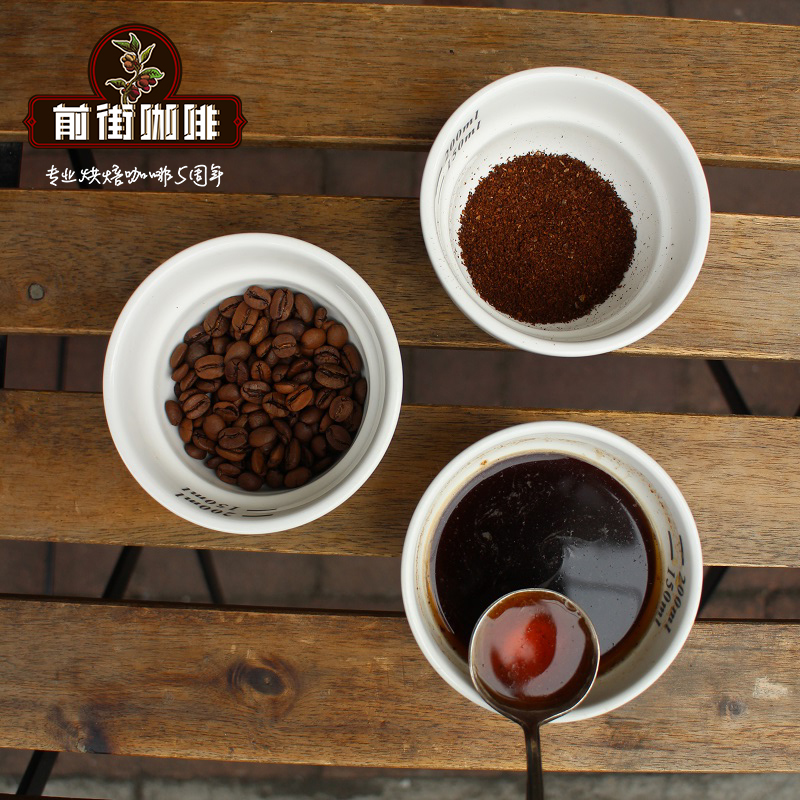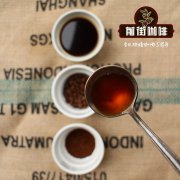What is the TDS in coffee? how to measure the concentration of coffee? how much is espresso?

It's hard to taste coffee, but one thing people always taste is the strength of coffee. We can all agree that espresso is stronger and therefore more flavored than filtered coffee. But let's take a closer look at the power of coffee again!
How do we measure strength?
Just saying that something is strong is not scientific or accurate. We need to measure power so that we can talk about the same thing. In coffee, strength is measured in the form of total dissolved solids (TDS), usually as a percentage (%). When we measure TDS, we are evaluating the concentration of soluble matter so that the soluble matter in coffee can be condensed to the amount in the cup. In short, the concentration of coffee (strong) or the water quality (mild).
It is almost impossible to look at the TDS of the drink alone, so a refractometer is needed to measure it. The refractometer can measure the refraction angle of light in the liquid, thus distinguishing the thickness of the liquid. The refractometer is usually used in the laboratory to test plasma proteins in the blood or to identify substances in gems. Coffee is also easy to use! To measure the TDS of coffee using a refractometer, follow these steps:
1. Reset the refractometer to zero with distilled water (not needed before each reading, only once a day)
two。 Stir the drink well (the coffee is delaminated very quickly)
3. Sampling pipette
4. The pipette pours the coffee on the refractometer glass so that the coffee covers the glass.
5. Wait 10-20 seconds.
6. Close the cover of the refractometer and press "GO" until you see the same reading three times in a row.
7. Dry the glass with a paper towel
8. Wipe the glass with an alcohol pad or wipe the paper towel with alcohol
Be careful! This process works if you want to measure filtered coffee. When measuring with espresso, you need to filter the sample using a specific filter (such as this) to remove carbon dioxide from the sample. Then, take the sample from the espresso with a syringe, insert the filter into the syringe, and push the sample through the filter. Otherwise, the steps for TDS measurement are the same.
How to use TDS?
One way to use TDS is to define different coffee drinks. Espresso is espresso when its TDS is between 8-12%. Have you ever heard of ristretto? There are millions of definitions of how to make ristretto, but I think the most accurate way to define it is to say that the TDS of ristretto should be more than 12%. So it's just a stronger espresso (maybe not enough? ). If you work LUNGO in the same way, its TDS should be between 2-8%. For filtered coffee, the correct TDS should be between 1.1% and 1.35% (SCA Golden Cup Award), but I think this is quite mild for light roasting, so I would like to raise it to 1.9%.
Important Notice :
前街咖啡 FrontStreet Coffee has moved to new addredd:
FrontStreet Coffee Address: 315,Donghua East Road,GuangZhou
Tel:020 38364473
- Prev

Ancient coffee producing area of Mocha in Yemen | introduction to "Happy" coffee produced by Haraaz Hanas
Haraaz Hanas in Yemen is one of the nine small coffee producers in the north. The coffee is grown on terraces. There is no data to verify the wild species. What is so special about this bean? Haraaz is a small batch of mochas specially produced for single bean merchants, who only buy ripe red coffee cherries from soybean farmers, rather than those that have been dried and have been harvested for how long.
- Next

How to measure the extraction rate of coffee? Do you know how to calculate the extraction rate of coffee?
You may have heard the barista say: this cup of coffee is overextracted. The term overextraction is a simple method, it can be said that it has too much bitterness and makes some kind of mistake. Let's explore the world of extraction more deeply! Extraction. So what is extraction? How much of the coffee powder is dissolved in water? So, if we simply say, for example, from 20 grams of agent
Related
- Beginners will see the "Coffee pull flower" guide!
- What is the difference between ice blog purified milk and ordinary milk coffee?
- Why is the Philippines the largest producer of crops in Liberia?
- For coffee extraction, should the fine powder be retained?
- How does extracted espresso fill pressed powder? How much strength does it take to press the powder?
- How to make jasmine cold extract coffee? Is the jasmine + latte good?
- Will this little toy really make the coffee taste better? How does Lily Drip affect coffee extraction?
- Will the action of slapping the filter cup also affect coffee extraction?
- What's the difference between powder-to-water ratio and powder-to-liquid ratio?
- What is the Ethiopian local species? What does it have to do with Heirloom native species?

